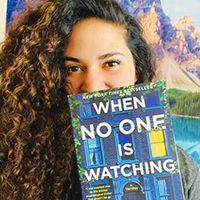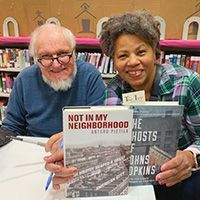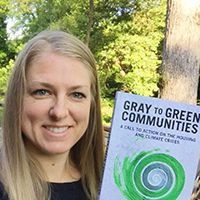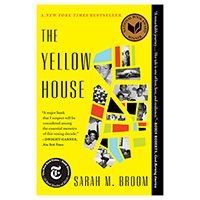Every April we observe Fair Housing Month to celebrate the anniversary of The Fair Housing Act being signed into law. The Act, which turns 53 this year, prohibits housing discrimination because of race, color, religion, national origin, sex, disability or family status.
Our work at Enterprise centers on making home and community places of pride, power and belonging, and platforms for resilience and upward mobility for all. The Fair Housing Act is integral to that mission, so we checked in with a few colleagues to get their thoughts on the topic. We hope you'll bookmark this reading list to make Fair Housing Month a year-round observance!

"When No One Is Watching"
Written by: Alyssa Cole
Reviewed by: Dani Velasco, Senior Content Management Specialist
"When No One Is Watching" is shelved under a “fiction thriller,” but it couldn’t be any more real. The story covers modern racism, gentrification and the scary experiences many people are faced with when their communities are “revitalized,” and they are pushed out of their own neighborhoods. Cole did a phenomenal job creating a nightmare from everyday terrors, and with Fair Housing Month signifying a recommitment to expanding equal access to housing, we must raise the voices and experiences of those who have been unfairly treated based on discrimination in housing.

"Not in My Neighborhood"
Written by: Antero Pietila
Reviewed by: Sharon Turner, Development Equity Manager
"Not in My Neighborhood" is a riveting eye opener that examines the many tools of discrimination used by politicians and the federal government to intentionally segregate housing for African-Americans and Jewish people. As a native Baltimorean, Pietila’s book has helped me to connect the dots for the planned landscape of neighborhoods initiated by restrictive covenants and the urban decline of others resulting from intentional disinvestment. Nimbyism, racial and ethnic exclusion and insensitivity, still exist in Baltimore City. The commemoration of the Fair Housing Act is so important to expand equal and affordable access to housing to all. I’m so honored to have met the author featured in the photo who also wrote another great book, The Ghosts of Johns Hopkins, and for the honor to work for an organization that continues to celebrate this mission each and every day.

"Gray to Green Communities"
Written by: Dana Bourland
Reviewed by: Lauren Westmoreland, Senior Program Director, Policy
"Gray to Green Communities" was an easy, inspirational read that shared the journey of Dana and Enterprise Green Communities. It reminded me of how far we’ve come in the affordable housing sector with regards to green building – and it’s impressive! Not only have green building programs like Enterprise Green Communities created higher quality places for affordable housing residents to live, but it also pushed the construction sector to create healthier building products for everyone. Now, I can be assured that the paint I use in my children’s’ bedroom is not harmful. However, we still have a long road in front of us. The book reflected on the obstacles that still exist, and leaves us with the charge of responding to climate change now.

"Evicted: Poverty and Profit in the American City"
Written by: Matthew Desmond
Reviewed by: Danielle Hammann, VP, Investor Relations
"Evicted" follows the lives and daily struggles of four individuals and families as they were evicted from one substandard, dilapidated rental unit after another, with periods of couch-surfing and homeless shelters in between. Although the book narrative was focused on the poorest neighborhoods of Milwaukee, WI, this same story is playing out in cities and towns all over the country. The story evidenced how housing instability causes unemployment, loss of possessions, hunger, and many other forms of hardship, but most significant is the impact on the children of these families, especially school-aged children. The author did a good job of telling the characters’ stories, and he offered up some solutions, including universal housing vouchers for all eligible households. The book struck me both because I personally know many families with similar lived experiences and because it demonstrated the importance of the work Enterprise is doing to help address these problems.

"The Yellow House"
Written by: Sarah M. Broom
Reviewed by: Katie McKenna, Director, Denver Market
"The Yellow House" is a powerful memoir centered around Broom’s large family, their beloved home, and how Hurricane Katrina scattered both. The Yellow House is a shotgun house that the author’s mother, Ivory Mae, bought in 1961, in redlined East New Orleans, with insurance money after her first husband’s death. “The Yellow House was witness to our lives,” Broom writes. This book is dense with characters and stories whose lives are greatly impacted by residential segregation created by redlining and minimal enforcement of the Fair Housing Act that was intended to undo it. Reading this firsthand account has motivated me to work even harder to elevate the importance of fully implementing the Fair Housing Act this month and always.
